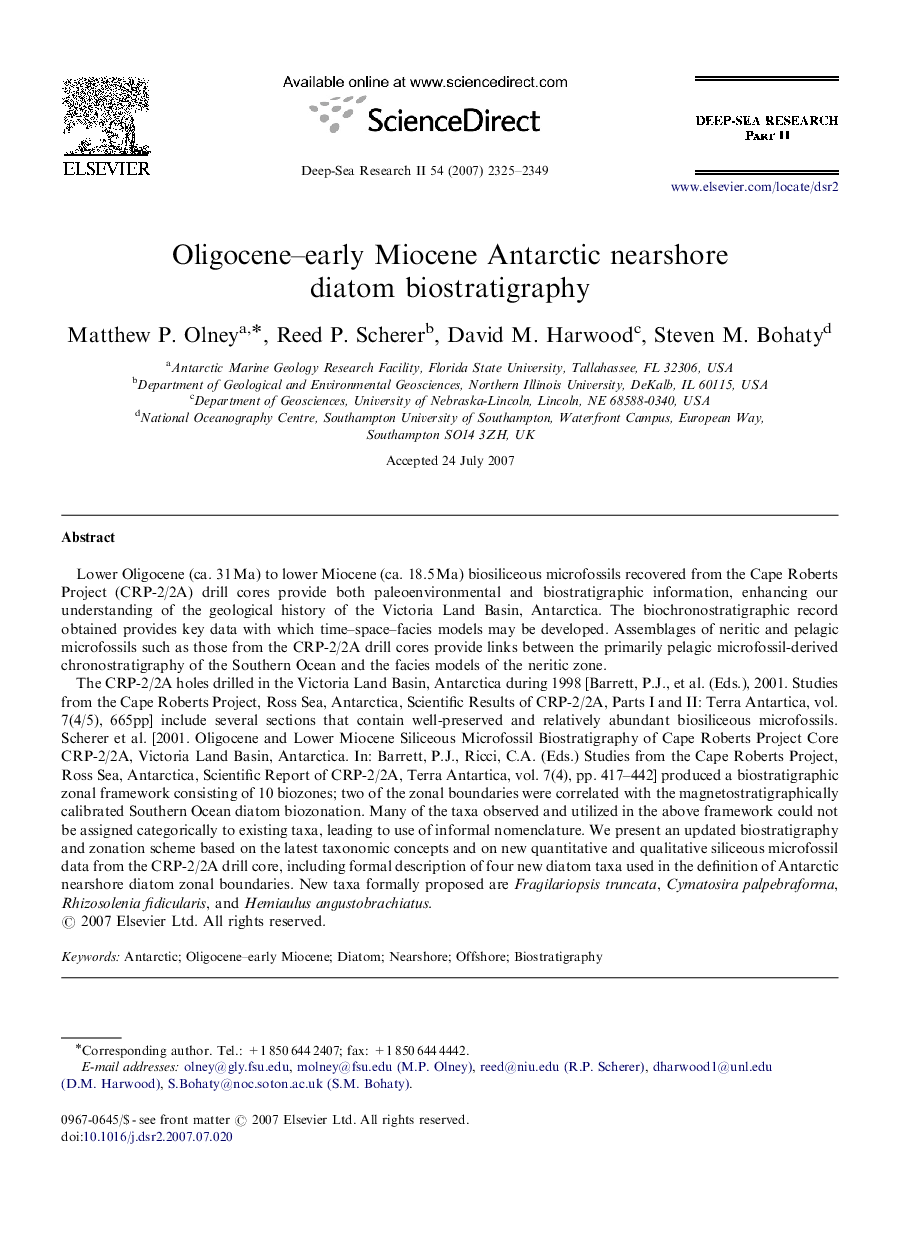| Article ID | Journal | Published Year | Pages | File Type |
|---|---|---|---|---|
| 4538274 | Deep Sea Research Part II: Topical Studies in Oceanography | 2007 | 25 Pages |
Lower Oligocene (ca. 31 Ma) to lower Miocene (ca. 18.5 Ma) biosiliceous microfossils recovered from the Cape Roberts Project (CRP-2/2A) drill cores provide both paleoenvironmental and biostratigraphic information, enhancing our understanding of the geological history of the Victoria Land Basin, Antarctica. The biochronostratigraphic record obtained provides key data with which time–space–facies models may be developed. Assemblages of neritic and pelagic microfossils such as those from the CRP-2/2A drill cores provide links between the primarily pelagic microfossil-derived chronostratigraphy of the Southern Ocean and the facies models of the neritic zone.The CRP-2/2A holes drilled in the Victoria Land Basin, Antarctica during 1998 [Barrett, P.J., et al. (Eds.), 2001. Studies from the Cape Roberts Project, Ross Sea, Antarctica, Scientific Results of CRP-2/2A, Parts I and II: Terra Antartica, vol. 7(4/5), 665pp] include several sections that contain well-preserved and relatively abundant biosiliceous microfossils. Scherer et al. [2001. Oligocene and Lower Miocene Siliceous Microfossil Biostratigraphy of Cape Roberts Project Core CRP-2/2A, Victoria Land Basin, Antarctica. In: Barrett, P.J., Ricci, C.A. (Eds.) Studies from the Cape Roberts Project, Ross Sea, Antarctica, Scientific Report of CRP-2/2A, Terra Antartica, vol. 7(4), pp. 417–442] produced a biostratigraphic zonal framework consisting of 10 biozones; two of the zonal boundaries were correlated with the magnetostratigraphically calibrated Southern Ocean diatom biozonation. Many of the taxa observed and utilized in the above framework could not be assigned categorically to existing taxa, leading to use of informal nomenclature. We present an updated biostratigraphy and zonation scheme based on the latest taxonomic concepts and on new quantitative and qualitative siliceous microfossil data from the CRP-2/2A drill core, including formal description of four new diatom taxa used in the definition of Antarctic nearshore diatom zonal boundaries. New taxa formally proposed are Fragilariopsis truncata, Cymatosira palpebraforma, Rhizosolenia fidicularis, and Hemiaulus angustobrachiatus.
